Functions of posture
- Static postural reflexes
- maintenance of the body in an upright, balanced position
- Phasic postural reflexes
- provision of a stable background for voluntary activity
Equilibrium: maintenance of a normal posture with good alignment
Posture serves 3 main behavioural functions:
- Antigravity (STATIC)
- support head and body against gravity
- Alignment with centre of gravity (STATIC)
- Maintain centre of body’s mass over centre of support
- Stable background for movement (DYNAMIC)
- Stabilise supporting parts of body while other parts move
Mechanisms to maintain posture
- Feed forward
- modified by experience
- stabilising body prior to movement
- Feedback
- evoked by sensory mechanism following loss of balance
- automatic
- stereotyped
- appropriately scaled
- evoked by sensory mechanism following loss of balance
Postural control
- Higher centres
- Cerebral cortex
- Optical righting reflex
- Placing reaction
- Hopping reaction
- Cerebellum
- Basal ganglia
- Cerebral cortex
- Brainstem
- Pons
- Midbrain
- the Righting reflex
- labryrinthe
- neck
- body on head
- body on body
- the Righting reflex
- Medulla
- tonic labyrinthine reflex
- tonic neck reflex
- Spinal cord
- +ve & –ve supporting reaction
- stretch reflex
_____________________________________________________________________
Static postural reflexes
- The axial muscles functions continuously & unconsciously
- making tiny adjustments
- To enable body to keep seated/upright
- despite pull of gravity
- When the centre of gravity falls within the area bounded by the feet, the posture is stable.
- If not, we fall!
- Antigravity muscles (to maintain natural posture)
- upright animals – extensor
- extensor dominance
- masked by higher controls
- If connection with higher control is loss, this becomes unmasked
- seen as extensor rigidity
- extensor response – Babinski sign UMN lesion
- extensor dominance
- animals that hang upside down – flexor
- flexor dominance
- loss of higher control
- flexor rigidity
- loss of higher control
- flexor dominance
- upright animals – extensor
- Maintenance of position according to centre of gravity
- Women in heels
- COG shifts forward
- So pull back shoulders to maintain balance
- Pregnant woman
- COG shift forward
- So place hands on hips to lean backwards
- Incorrect posture (like bending forward in gardening)
- puts strain on antigravity muscles
- Newborn child can walk
- but ability suppressed few days later
- start lying on belly
- head extended, front limbs extended, back limbs flexed (like going up slope)
- walking patterns redeveloped a year later
- Baby can’t hold up neck until few months later
- Turning the head to one side (integrated in medulla)
- extension of ipsilateral limb
- flexion of contralateral limb
- but ability suppressed few days later
- Women in heels
- Postural changes – triggered by information from sensory receptors:
- Proprioceptors
- change in position of joints
- Visual
- detection of movement/orientation
- Vestibular
- motion – speed & direction
- Cutaneous
- shearing forces
- Proprioceptors
Postural reflexes masked by higher controls. Unmasked when:
- Spinal cord transection in cervical region
- Decerebration (removal of brain influence)
- transection at superior border of pons
- decerebrate rigidity
- Decortication (removal of cortical influence)
- transection at superior border of midbrain
- decorticate rigidity
- Cardinal rule of neurology
- if suprasegmental influences are removed
- the effect of loss of inhibition are more pronounced than loss of stimulation
- more inhibitory fibres than facilitatory fibres
- activities are then released from control of higher centres
Spinal cord reflex
Stretch reflex
a muscle contraction in response to stretching within the muscle
- When muscle lengthens, the spindle is stretched and the activity increases.
- This increases alpha motorneuron activity.
- Therefore the muscle contracts and the length decreases as a result.
- The gamma co-activation is important in this reflex because this allows spindles in the muscles to remain taut therefore sensitive even during contraction.
- Consider this scenario: flexing your arm to touch your nose and while doing that you encounter perturbation which reverses the movement.
- With Gamma co-activation, monosynaptic stretch reflex return the movement to its previous course and the arm reaches the nose, but without it, spindles are slack and reflex will not be able to correct for the perturbation and the arm will fail to reach the nose.
- Function of this reflex is to maintain a constant length and has the shortest latency of all spinal reflexes including ‘Reflex mediated by the GTO (Golgi Tendon Organ)’ and ‘Reflexes mediated by pain and cutaneous receptors.’
Medulla reflexes
Tonic neck reflex (primitive reflex found in newborn)
- head up causes
- hind limbs to flex
- fore limbs to extend
- head down
- fore limbs flex
- hind limbs extend
- head turn to one side
- limbs on the side where head is turned to extend/straighten
- opposite side is bent/flexed
- Decorticate posturing response (flexor)
- signs
- arms flexed & bent inwards towards chest
- hands clenched into fists
- legs extended
- feed turned inward
- seen in corticospintal tract lesion
- damage to (level above red nucleus)
- cerebral hemispheres
- internal capsule
- thalamus
- midbrain
- basal ganglia & reticulo-inhibitory fibres intact
- damage to (level above red nucleus)
- Glasgow coma scale – 3
- signs
- Decerebrate posturing response (extensor)
- signs
- head arched back
- arms extended by the sides & rotated internally (outward)
- extended elbows*
- legs extended & rotated internally
- rigid with clenched teeth
- damage to (level below red nucleus)
- brain stem
- midbrain
- cerebellum
- brain stem
- Glasgow coma scale – 2
- signs
Tonic labyrinthine reflex (primitive reflex in newborn)
Gravity –> stimulation of otolith organs in labyrinth –> medulla –> contraction of limb extensor muscles
- head tilt back while lying on back
- back stiffen and arch backwards
- legs straigthen
- stiffen and push together
- toes to point
- arms to bend at the elbows and wrists
- hands to become fingers to curl
Midbrain Righting reflexes
Dynamic reflexes
-restore a normal standing position & keep head upright
-reflexes seen in midbrain decorticate
-the ability to assume an optimal position when there has been a departure from it
- Labyrinthine righting reflex
- Gravity
- otolith organs
- head kept level against gravity
- Gravity
- Neck righting reflex
- Stretching of neck muscles
- righting of thorax, shoulders and pelvis
- body remains tilted, the neck muscles are stretched and initiate a wave of stretch reflexes to right the thorax, abdomen and hindquarters
- Body on head righting reflex
- head kept level against gravity when body is laid on its side
- lift head sideways
- head kept level against gravity when body is laid on its side
- Body on body righting reflex
- righting of body even when head is held down
Cerebral cortex – reflexes
- Optical righting reflex
- visual clues –> righting of the head
- Placing reaction
- visual, enteroceptive & proprioceptive clues
- -> foot placed on supporting surface
- Hopping reaction
- lateral displacement while standing
- cause animal to hop to maintain balance
_____________________________________________________________________
Summary



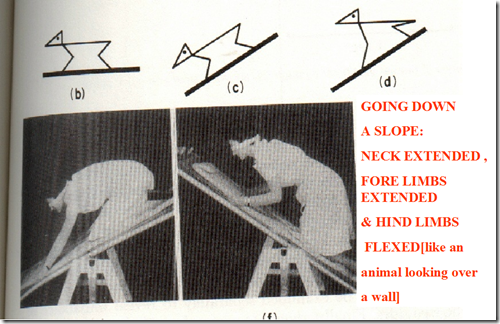




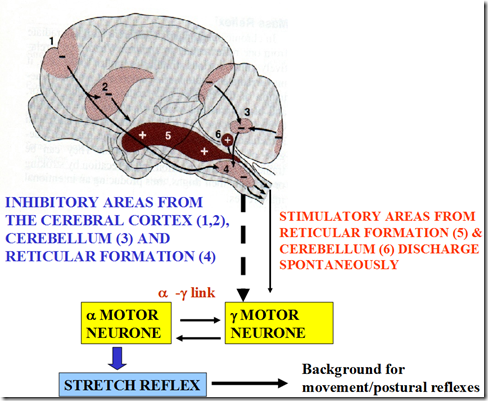
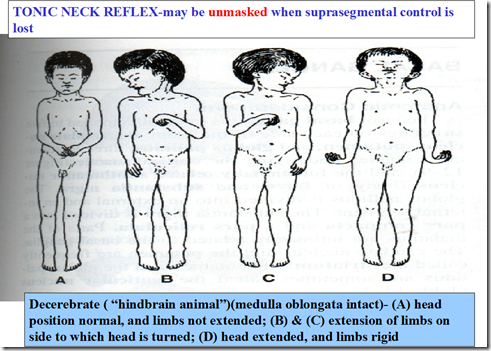
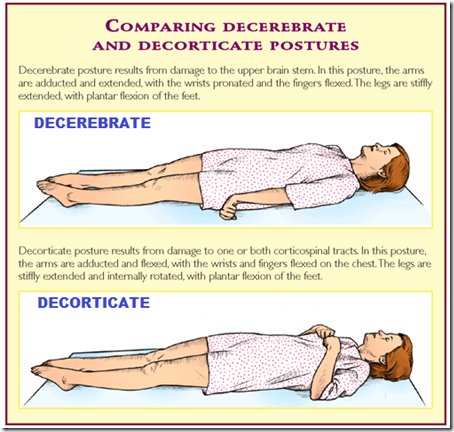
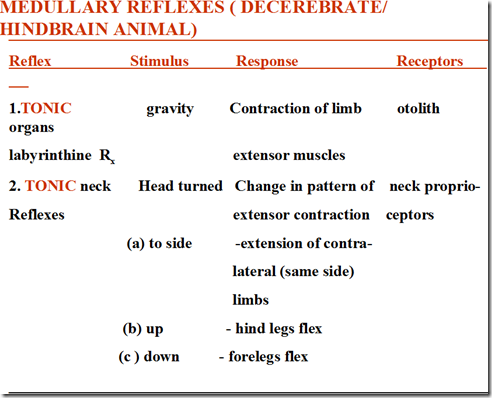

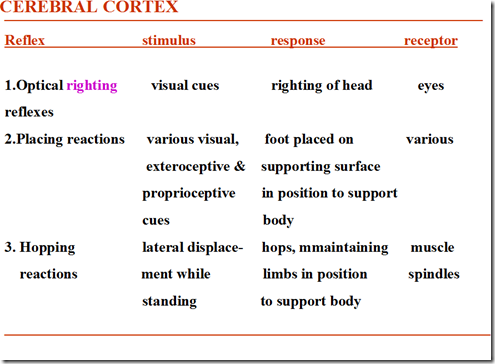
There is no Glasgow Coma Scale of 2…